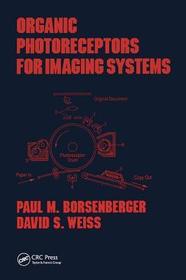
Organic Photoreceptors for Imaging Systems
Series: Optical Science and Engineering; 64;
- Publisher's listprice GBP 200.00
-
95 550 Ft (91 000 Ft + 5% VAT)
The price is estimated because at the time of ordering we do not know what conversion rates will apply to HUF / product currency when the book arrives. In case HUF is weaker, the price increases slightly, in case HUF is stronger, the price goes lower slightly.
- Discount 20% (cc. 19 110 Ft off)
- Discounted price 76 440 Ft (72 800 Ft + 5% VAT)
- Discount is valid until: 31 December 2025
Subcribe now and take benefit of a favourable price.
Subscribe
95 550 Ft

Availability
Estimated delivery time: Expected time of arrival: end of January 2026.
Not in stock at Prospero.
Why don't you give exact delivery time?
Delivery time is estimated on our previous experiences. We give estimations only, because we order from outside Hungary, and the delivery time mainly depends on how quickly the publisher supplies the book. Faster or slower deliveries both happen, but we do our best to supply as quickly as possible.
Product details:
- Edition number 1
- Publisher CRC Press
- Date of Publication 5 August 1993
- ISBN 9780824789268
- Binding Hardback
- No. of pages470 pages
- Size 229x152 mm
- Weight 771 g
- Language English 0
Categories
Short description:
This reference covers in detail the preparation and application of current and emerging organic materials used as xerographic photoreceptors, emphasizing the photo-electric properties of organic solids and evaluating their potential use in xerography.;Reviewing the development of xerography and the steps in the xerographic process, this volume: summarizes the properties, advantages and disadvantages of various classes of materials used as photoreceptors; describes the methods of characterizing the sensitometry of xerographic photoreceptors; examines the physics and chemistry of photogeneration and charge transport processes; and elucidates the sensimetry of different classes of organic materials.;Organic Photoreceptors for Imaging Systems is intended for imaging scientists, optical engineers and physicists, organic chemists, materials scienctists and students in these disciplines.
MoreLong description:
This reference covers in detail the preparation and application of current and emerging organic materials used as xerographic photoreceptors, emphasizing the photo-electric properties of organic solids and evaluating their potential use in xerography.;Reviewing the development of xerography and the steps in the xerographic process, this volume: summarizes the properties, advantages and disadvantages of various classes of materials used as photoreceptors; describes the methods of characterizing the sensitometry of xerographic photoreceptors; examines the physics and chemistry of photogeneration and charge transport processes; and elucidates the sensimetry of different classes of organic materials.;Organic Photoreceptors for Imaging Systems is intended for imaging scientists, optical engineers and physicists, organic chemists, materials scienctists and students in these disciplines.
". . .a unique reference. . .emphasizing the photoelectronic properties of organic solids and evaluating their potential use in xerography. "
---Optik: International Journal for Light and Electron Optics
". . .provides a very useful way of coming rapidly up to speed in this technologically important and still growing area. . . .constitutes a comprehensive and coherent treatment of the theory and practicalities of xerography, and represents excellent value for researchers entering or working in this field. "
---Journal of Organometallic Chemistry
". . .a pleasure to read. . ..will establish itself as a foremost text in optical engineering and in this regard is a necessity for the scientist and technologist working in the xerographic field and an important addition to all library shelves. "
---Journal of Photochemistry and Photobiology
Table of Contents:
Xerographic photoreceptors; charge acceptance and dark discharge; photoinduced discharge; photogeneration theories; photogeneration in organic solids; charge transport theories; charge transport in polymers and related materials; experimental techniques; photoreceptor preparation; photoreceptors; fatigue; summary and future requirements.
More






